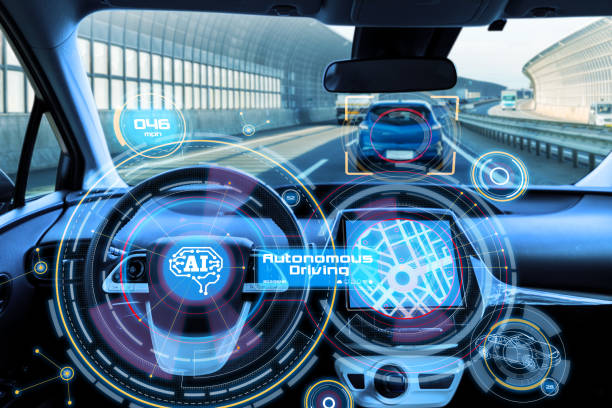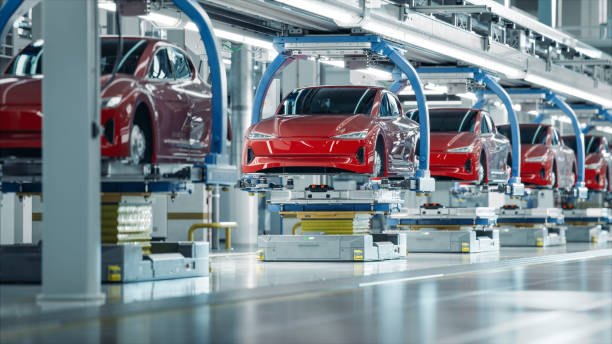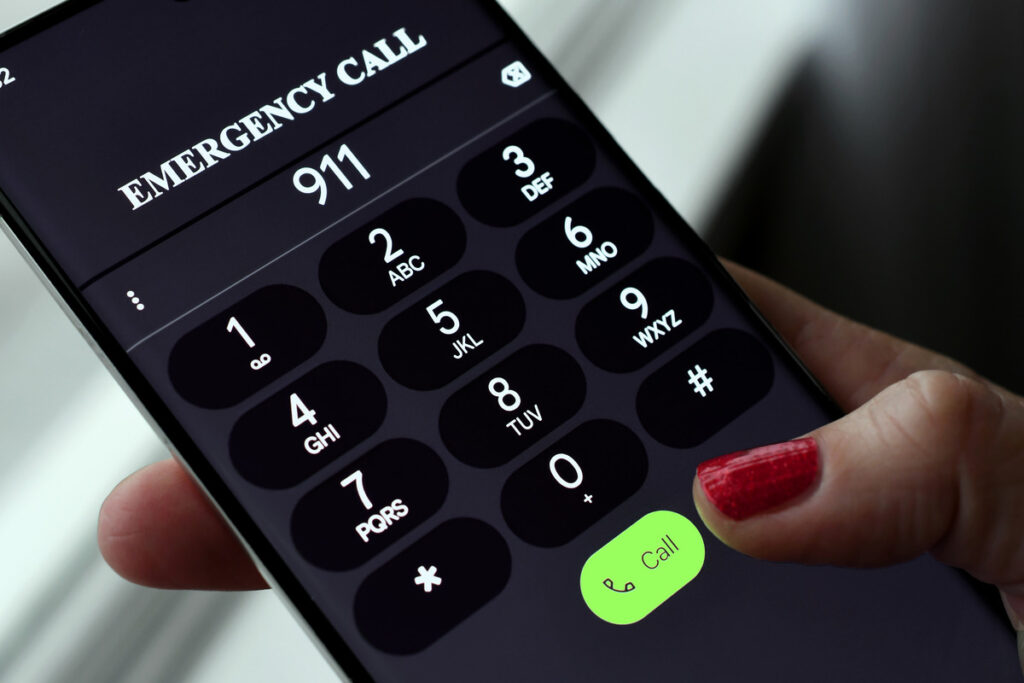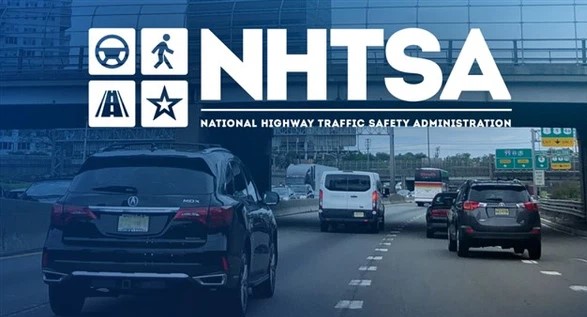Who’s at Fault in a Self-Driving Car Accident?
Table of Contents
- Introduction: The Rise of Self-Driving Cars
- Understanding Self-Driving Technology
- Determining Fault in Self-Driving Car Accidents
- Key Players in Self-Driving Car Accident Liability
- Legal Doctrines in Autonomous Vehicle Cases
- 5 Key Questions Answered
- Insurance and Self-Driving Cars
- Case Studies and Real-World Examples
- What to Do If You Are Involved in a Self-Driving Car Accident
- Regulatory Landscape and Future Legal Trends
- The Ethics of Autonomous Decision-Making
- Industry Standards and Testing Procedures
- Final Thoughts and Legal Help
1. Introduction: The Rise of Self-Driving Cars
Self-driving cars, once a futuristic concept, are now an emerging reality on our roads. With companies like Tesla, Waymo, Uber, Apple, and traditional manufacturers such as Ford and General Motors investing billions into autonomous vehicle (AV) technology, the future of transportation is shifting rapidly. Self-driving cars promise increased safety, reduced traffic congestion, and new levels of convenience. However, legal and safety concerns follow this evolving technology as with all innovation. One pressing question stands out: Who’s at fault in a self-driving car accident?
As self-driving cars become more common, understanding liability in self-driving car accidents becomes critical. These cases are complex, often involving multiple parties, advanced technologies, and evolving regulations. This blog deeply explores the issue, focusing on who can be held accountable when a self-driving car crashes, what legal frameworks currently apply, and how to protect yourself if involved in such an incident.
2. Understanding Self-Driving Technology
Self-driving or autonomous vehicles operate using a sophisticated combination of sensors, cameras, radar, lidar, GPS, and artificial intelligence (AI). These systems interpret the environment, make decisions, and control the vehicle.

- Level 0: No automation. The driver performs all tasks.
- Level 1: Driver assistance (e.g., adaptive cruise control).
- Level 2: Partial automation (e.g., Tesla Autopilot). The vehicle can manage speed and steering but requires human oversight.
- Level 3: Conditional automation. The car can drive itself under certain conditions, but the driver must take control when requested.
- Level 4: High automation. The car can drive itself without human input in specific environments.
- Level 5: Full automation. The car can operate without any human involvement in all conditions.
Most consumer AVs today fall between Levels 2 and 3, meaning the driver must remain engaged and responsible for intervening when necessary.
3. Determining Fault in Self-Driving Car Accidents
In a conventional accident, fault is usually assigned based on driver behavior, such as speeding, running a red light, or driving distracted. With self-driving car accidents, that dynamic shifts. Liability must be determined by examining the vehicle’s autonomous system performance, human oversight, and third-party factors like road conditions and signage.
Determining fault typically involves:
- Reviewing electronic data (similar to a black box) from the AV
- Examining surveillance or dashcam footage
- Assessing maintenance records
- Consulting with engineers and accident reconstruction specialists
- Evaluating whether the vehicle’s AI made reasonable driving decisions
The complexity of fault determination increases significantly when self-driving features are activated. In some cases, more than one party could be held responsible.
4. Key Players in Self-Driving Car Accident Liability
- Vehicle Manufacturer: The automaker may be liable if a crash results from a defect in the AV’s design or manufacture, such as a failed braking system or a faulty sensor.
- Software Company: If the AV uses third-party software to interpret driving conditions or make decisions, and that software malfunctions or misjudges a situation, the developer could be at fault.
- Safety Driver: A safety driver is still required in Level 2 and Level 3 AVs. They may share liability if that individual fails to intervene during a malfunction or hazard.
- Fleet Operator or Owner: If the AV is owned by a business such as a delivery service or rideshare company, poor maintenance or lack of employee training can be grounds for liability.
- Municipalities or Road Authorities: Road conditions, poorly maintained traffic signals, or faded road markings can confuse an AV’s sensors. In such cases, local governments may bear some responsibility.
- Component Manufacturers: A defective camera, radar, or sensor contributing to an accident can also lead to liability for the component manufacturer.
5. Legal Doctrines in Autonomous Vehicle Cases
Legal liability in self-driving car accidents often hinges on several well-established legal doctrines:
1. Negligence
This requires proving that a party owed a duty of care, breached it, and caused harm. A distracted human safety driver or a company that deployed faulty software could be found negligent.

2. Product Liability
Manufacturers may be held strictly liable if a product defect causes injury, even without proving negligence. This applies to design flaws, manufacturing defects, and failure to warn about potential hazards.
3. Strict Liability
Some jurisdictions apply strict liability to inherently dangerous activities. Given their experimental nature, there is a growing debate about whether self-driving vehicles fall under this category.
4. Comparative and Contributory Fault
These doctrines vary by state:
- Comparative Fault: Multiple parties can share liability. The plaintiff’s percentage of fault reduces the damages.
- Contributory Negligence: In a few states, any fault by the plaintiff can bar recovery entirely.
6. 5 Key Questions Answered
1. Whom can I hold accountable if a self-driving car causes an accident?
You may be able to hold the manufacturer, software provider, human driver (if applicable), and even the company operating the vehicle accountable. Determining the root cause is essential, and it usually requires expert analysis.
2. What evidence is most important after a self-driving car accident?
Data from the AV’s internal systems (e.g., driving logs, sensor data), dashcam footage, and witness statements are crucial. Legal teams often send spoliation letters to preserve this data before it’s overwritten or lost.
3. Can a pedestrian sue a self-driving car operator?
Yes. If a self-driving car hits a pedestrian, the pedestrian can, depending on the facts, pursue a claim against the driver, vehicle owner, or manufacturer. Pedestrians retain the right to seek damages, as in any motor vehicle case.
4. How does AV technology affect insurance claims?
Traditional auto insurance may not fully cover AV incidents. Some AV manufacturers offer their insurance, and insurers are adapting by including provisions for autonomous operation. However, navigating claims may be more complex and require legal assistance.
5. Are there federal laws governing self-driving car liability?
Not yet. Most AV-related laws are handled at the state level. However, federal regulatory bodies like NHTSA are actively studying the issue. Eventually, comprehensive federal legislation is expected.
7. Insurance and Self-Driving Cars
Self-driving cars challenge traditional auto insurance models. Insurers are developing new policies for AV-specific risks, such as software errors or sensor failures. Important considerations include:
- Policy Exclusions: Some policies exclude coverage for “automated system errors.”
- Higher Repair Costs: Advanced sensors and electronics make repairs more expensive.
- Liability Shifts: As automation increases, liability may shift away from individual drivers toward manufacturers or operators.
Drivers and fleet owners must review their coverage and ensure it includes protections for self-driving technologies.
8. Case Studies and Real-World Examples
Tesla Autopilot Crashes
In multiple Tesla crashes involving Autopilot, the system failed to detect obstacles properly, and drivers were found to be inattentive. Lawsuits have claimed the company misrepresented the technology’s capabilities.
Uber Fatality Case (2018)
A self-driving Uber in Arizona killed a pedestrian. The safety driver was streaming a show at the time. Investigations also showed Uber had turned off the car’s emergency braking features during testing.
Waymo Test Vehicle Accidents
While largely successful, Waymo vehicles have been involved in several minor incidents. Each incident contributes to growing legal precedents and risk assessments for AV operations.
9. What to Do If You Are Involved in a Self-Driving Car Accident

- Call 911 immediately: Your health and safety are paramount. Even minor injuries should be evaluated.
- Document the Scene: Take photos of the vehicles, street signs, license plates, and weather conditions.
- Gather Contact Info: Collect names and insurance info from all parties, as well as contact details of witnesses.
- Identify Automation Systems: Ask whether the AV system was active. Note any sensors, cameras, or external markings.
- Preserve Evidence: Your attorney can issue a preservation letter to prevent the deletion of critical driving data.
- Hire a Lawyer: AV accident claims require technical knowledge and investigative resources. Don’t go it alone.
10. Regulatory Landscape and Future Legal Trends
The legal system is playing catch-up with self-driving technologies. Current trends include:
- Federal Guidelines: NHTSA provides voluntary guidelines, but lacks enforcement authority.
- State Legislation: States like California, Arizona, and Florida are leaders in regulating AV testing and deployment.
- Emerging Tort Theories: Scholars propose new liability models, including shared liability pools and strict manufacturer liability.
- Data Access Laws: Accessing AV crash data is critical for victims. Some states are considering laws to guarantee public access.
As AVs become more widespread, we can expect sweeping changes in liability frameworks, insurance rules, and safety standards.
11. The Ethics of Autonomous Decision-Making
One often overlooked aspect of self-driving car accidents is the ethical dilemma posed by autonomous decision-making. When a human driver is confronted with a sudden accident scenario, they act instinctively. AVs, however, must rely on algorithms that weigh risks and potential outcomes before taking action.
The Trolley Problem Reimagined
Autonomous vehicles face versions of the classic “trolley problem”: If a crash is inevitable, should the car swerve to protect the driver but harm pedestrians? Or should it protect the many over the few? Engineers and software developers program these moral decisions, raising complex ethical questions about accountability and human values.
Global Ethical Frameworks
Different cultures have different perspectives on acceptable risks. A study by MIT found that preferences for how AVs should behave in crash situations varied dramatically across countries. This poses a regulatory and programming challenge for AV manufacturers operating globally.
Lack of Transparency
Manufacturers often keep the specifics of these ethical algorithms private, which complicates litigation and consumer trust. To create consistency and transparency, a future push toward open-source ethical frameworks may be needed.
Ethical Responsibility
Who is ethically responsible when an AV makes a “morally wrong” decision? Is it the programmer, the manufacturer, or the fleet operator? As AVs become more prevalent, these questions are likely to be tested in court.
Adding these ethical dimensions to our understanding of self-driving technology helps illustrate why legal frameworks must evolve to match the moral complexities of artificial intelligence in public safety.
12. Industry Standards and Testing Procedures
The autonomous vehicle industry must operate under rigorous testing standards and safety protocols to prevent self-driving car accidents. However, these are often self-regulated, raising concerns about their adequacy.

Federal and State Testing Requirements
There is no universally binding federal testing standard for autonomous vehicles in the United States. The National Highway Traffic Safety Administration (NHTSA) provides voluntary guidelines, but most AV testing regulations are implemented at the state level, leading to inconsistent safety thresholds from one state to another.
Some states, like California and Arizona, require companies to file disengagement reports that track how often a human safety driver must take control. Others, however, allow AV testing with far less oversight, leading to concerns that vehicles are being deployed before they are thoroughly vetted.
Simulation vs. Real-World Testing
Autonomous vehicle developers rely heavily on simulation testing, running millions of virtual miles to anticipate rare but dangerous scenarios. While simulations are valuable, they cannot fully replicate real-world conditions, such as erratic human behavior, road construction, and weather extremes, which are often the root cause of AV-related accidents.
Testing Transparency and Public Reporting
Another challenge lies in the lack of transparency. While some companies, like Waymo, publish safety reports and detailed testing data, many AV companies are less forthcoming. Consumers and regulators have pushed for mandatory public reporting of test results, disengagements, and known software limitations.
Greater transparency in testing not only builds public trust but also supports legal accountability. If an AV company cannot demonstrate that its vehicles meet minimum safety standards, it may be exposed to additional liability in the event of a crash.
Third-Party Audits and Safety Validation
There is a growing call for independent third-party AV software and systems audits. Like the aviation industry, which requires stringent FAA testing and certifications, advocates argue that AVs should not be fully road-approved without passing impartial safety validations.
13. Final Thoughts and Legal Help
Self-driving cars are transforming how we think about transportation and responsibility on the road. But with innovation comes uncertainty. When an accident happens, who pays the price? Whether it’s the driver, the tech company, or the car manufacturer, liability in self-driving car accidents can be complicated.
We are entering a transitional period in technology and law, where old rules are no longer sufficient. Whether it’s understanding who can be sued, what types of insurance coverage apply, or how to evaluate complex AV data, individuals involved in these cases must act quickly and strategically. Legal representation is more important than ever.
If you or someone you love has been injured in a self-driving car crash, it’s crucial to act fast. Evidence disappears quickly, and AV companies are often backed by teams of lawyers who move to protect their interests early. These cases also require expert witnesses, technical specialists, and a legal team equipped to challenge large corporations and insurance carriers.
Our firm stays current on legal developments and court rulings surrounding autonomous vehicles, ensuring you get top-tier representation. As industry standards evolve, so must your legal strategy. Don’t settle for generic legal help work with professionals who understand the future of transportation liability.

Call to Action
The Law Office of Bobbie Young is ready to fight for you. Our legal team understands the unique challenges of self-driving car accident cases, and we will aggressively pursue justice on your behalf.
Don’t Get Played — Get Paid.
Your Legal Solution Starts Here
Clear, practical legal advice you can count on when it matters most